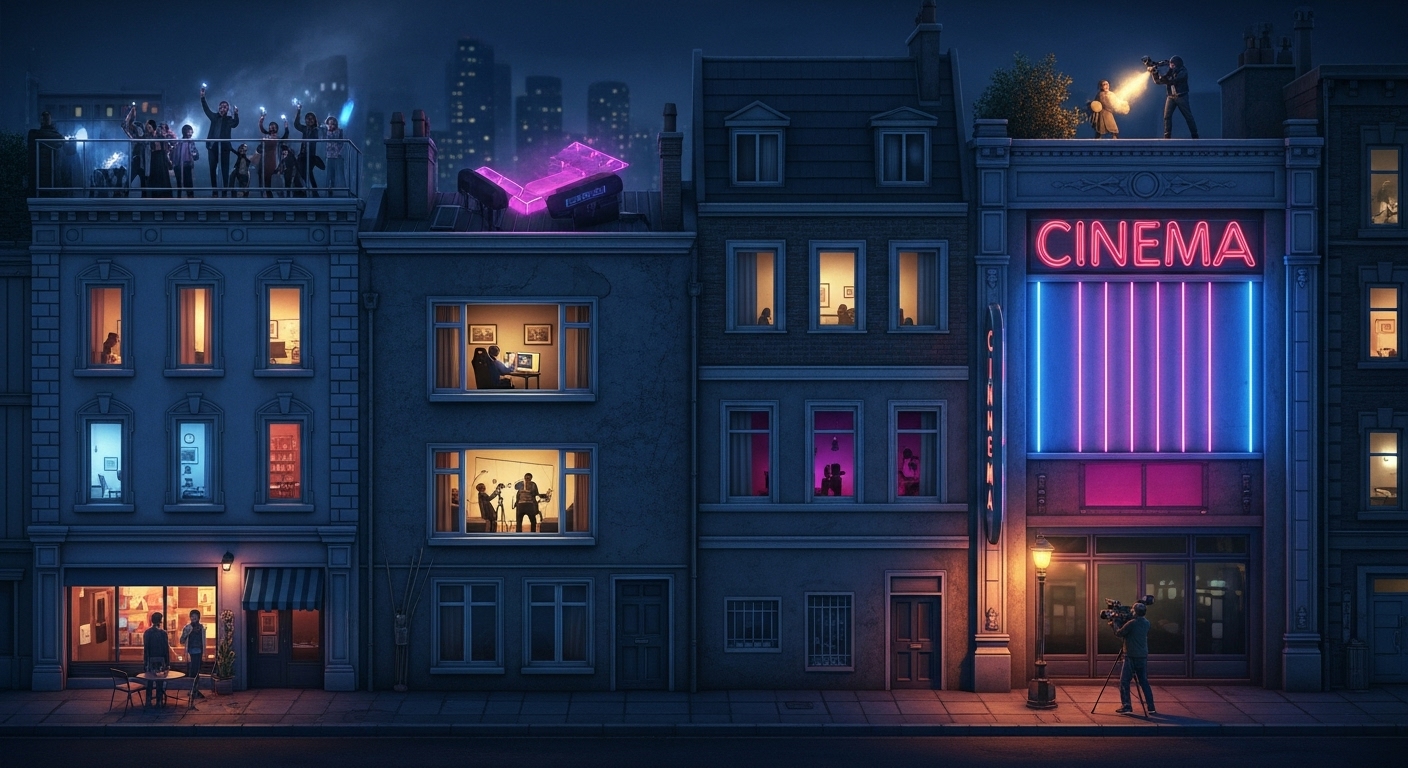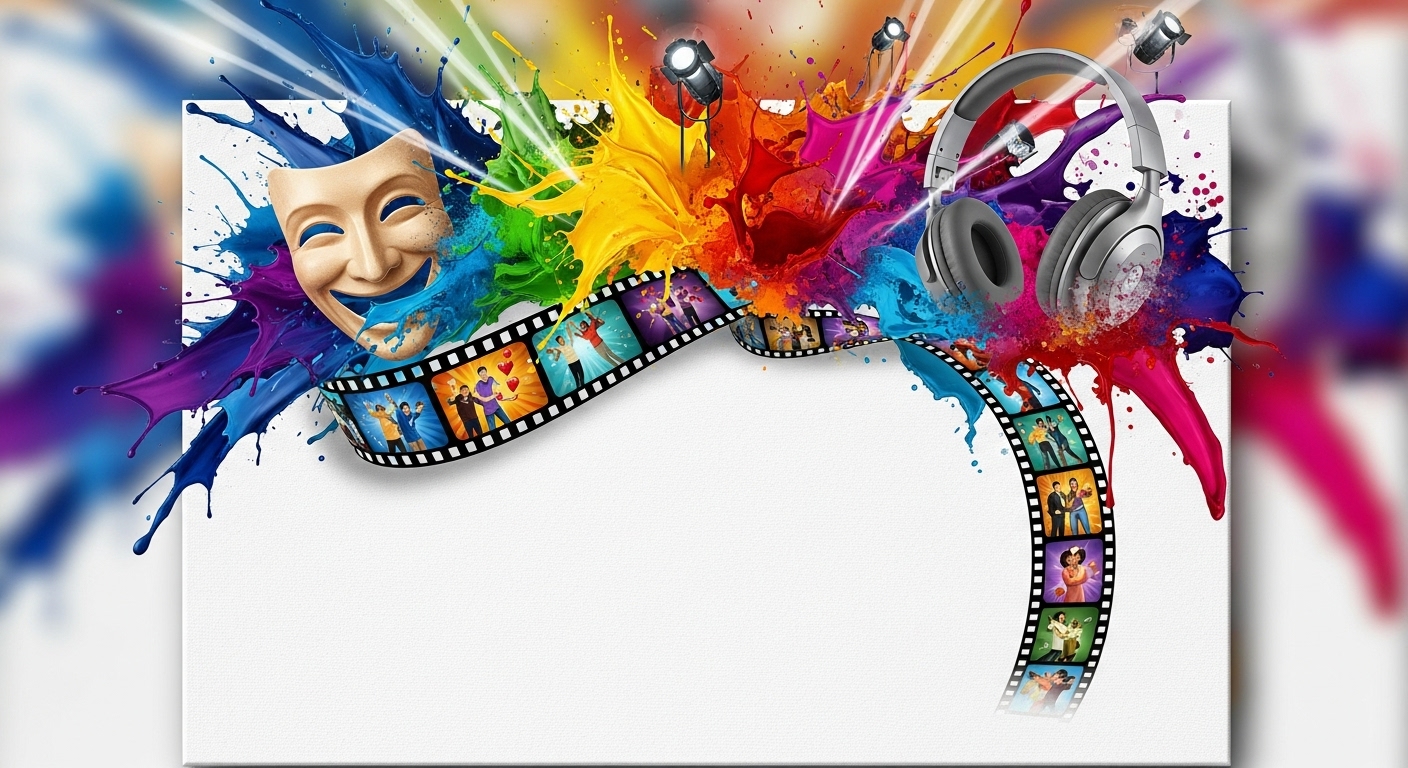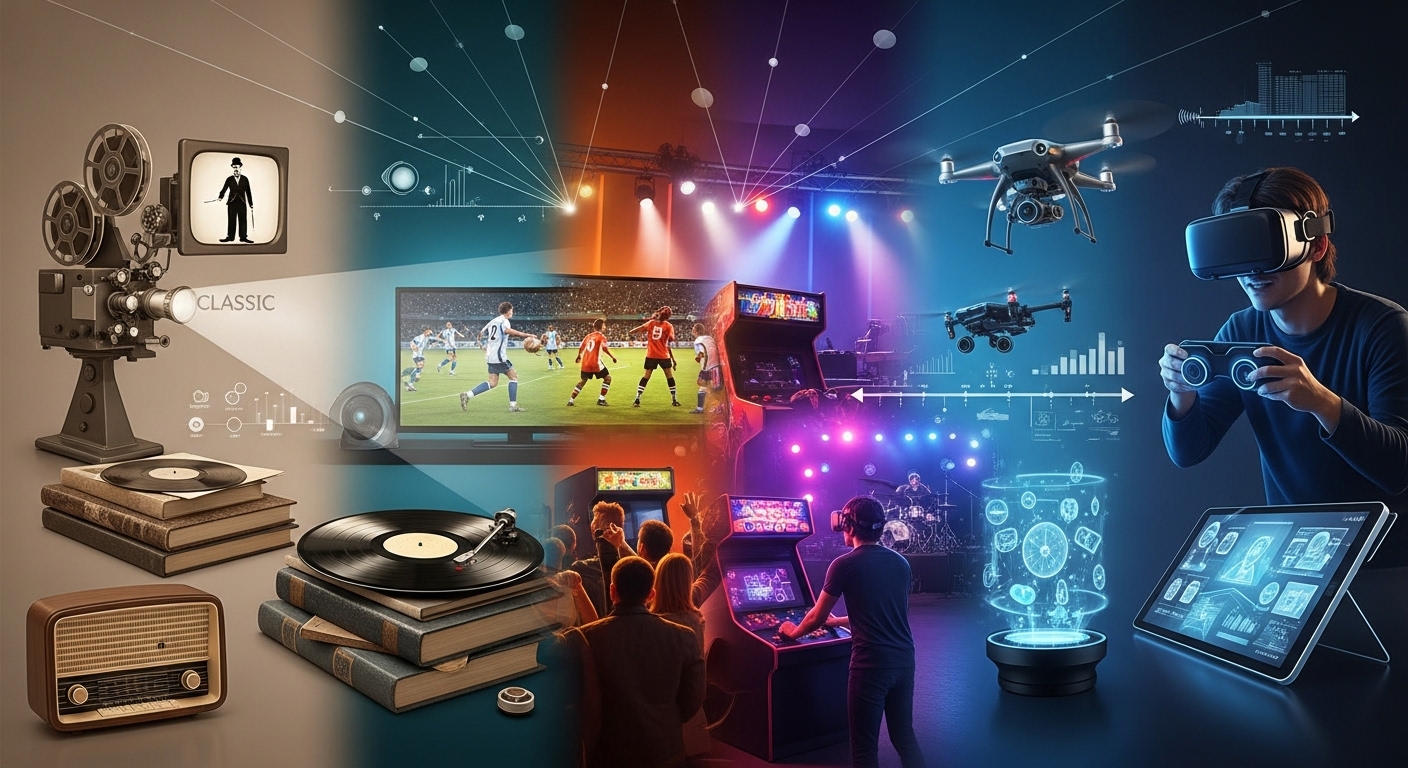Entertainment has always been at the heart of human life. Long before screens and streaming platforms, people gathered around fires to share stories, sing songs, and perform dances that brought joy and meaning to their days. Over centuries, the ways we entertain ourselves have evolved dramatically, but the reasons we do it remain surprisingly constant. Entertainment reflects our desires, fears, hopes, and imaginations. It connects us, distracts us, and sometimes even defines who we are.
In today’s world, entertainment is more accessible and diverse than ever before. With a few taps, we can watch films from across the globe, play immersive games, or attend virtual concerts without leaving home. But beyond the glitter and spectacle, entertainment tells a deeper story about what it means to be human.
The Ancient Roots of Modern Amusement
The idea of entertainment is older than civilization itself. Early humans found joy and meaning in storytelling, music, and visual art. Cave paintings were not just about survival—they were about expression and shared experience. A painting of a hunt wasn’t only a record; it was a story, a performance meant to teach and to captivate.
As societies formed, entertainment became more organized. In ancient Greece, theater emerged as both art and public discourse. Tragedies and comedies explored questions of fate, morality, and human emotion. The Romans brought spectacle to a new level with gladiator games, chariot races, and public festivals that could attract tens of thousands of people.
In Asia, traditional performances like the Japanese Noh and Kabuki, or India’s classical dance and epic storytelling, showed how culture and entertainment could blend into something spiritual and social. In these early forms, we can already see what entertainment has always been about: emotion, identity, and community.
The Rise of Theater and Literature
The theater remained the dominant form of entertainment for centuries. Shakespeare’s plays in Elizabethan England were as popular in their time as blockbuster movies are today. Crowds gathered to watch dramas filled with love, betrayal, humor, and tragedy—universal emotions that transcend centuries.
Around the same time, the written word began to take on a larger role in entertaining people. Books were once luxury items, but with the printing press, literature became a mass medium. Suddenly, people could explore worlds and lives far beyond their own. From the romanticism of Jane Austen’s England to the gothic imagination of Mary Shelley’s Frankenstein, literature proved that entertainment could also provoke thought and inspire change.
Storytelling evolved from oral traditions to printed tales and, eventually, to visual and digital media. Yet, the essence remained the same: we crave stories that make us feel.
The Golden Age of Music and Performance
Music is perhaps the most universal form of entertainment. Every culture, from the smallest tribe to the largest nation, has developed its own rhythms and sounds. It speaks directly to emotion—no translation needed.
In the 18th and 19th centuries, music became both art and spectacle. The great composers—Beethoven, Mozart, Chopin—turned performance into a shared experience of passion and beauty. Concert halls became the gathering places of their time, where audiences could be swept away by melody and emotion.
Then came jazz, blues, and rock and roll. These were more than genres—they were cultural revolutions. They gave voice to rebellion, identity, and freedom. Musicians like Louis Armstrong, Elvis Presley, and The Beatles didn’t just entertain; they changed how generations saw themselves and the world around them.
Today, music continues to evolve at lightning speed. With technology, an artist can create and release a song from their bedroom and reach millions within hours. Yet, despite all the tools, the heart of music remains the same: connection through sound and emotion.
The Birth of Film and the Magic of the Moving Image
When motion pictures arrived at the end of the 19th century, they changed entertainment forever. What began as short silent clips soon evolved into storytelling through images. Audiences were captivated by the magic of seeing life move on screen.
Hollywood quickly became the center of this new art form. The early 20th century saw the rise of stars like Charlie Chaplin, whose humor spoke to universal human experience. Films became more than novelties—they were dreams captured on celluloid.
With the arrival of sound and color, movies turned into an industry that could move hearts and shape cultures. From the glamour of classic cinema to the gritty realism of post-war dramas, film became a mirror reflecting both fantasy and truth.
Modern cinema now combines art, technology, and storytelling in ways early pioneers could only imagine. Special effects, computer-generated imagery, and global streaming have made storytelling limitless. Yet, whether it’s a quiet indie film or a high-budget blockbuster, audiences still come for the same reason: to feel something genuine.
Television and the Age of Shared Moments
The mid-20th century brought another revolution: television. For the first time, entertainment entered people’s living rooms. Families gathered around small screens to watch news, comedy, sports, and drama.
Television changed not just entertainment but also social life. It created shared cultural moments—the moon landing, major sports finals, the finale of beloved shows—that united millions in collective memory.
As channels multiplied and formats diversified, television became a mirror for society’s hopes and fears. Sitcoms reflected family life, dramas explored morality, and talk shows gave voice to public opinion. Reality television, though controversial, blurred the line between performance and real life, showing how much we crave connection even through a screen.
Today, streaming platforms have redefined television once again. The schedule no longer dictates our viewing—we do. The binge-watching era allows us to consume stories in our own rhythm, yet the fundamental appeal remains the same: connection, curiosity, and emotion.
The Digital Explosion: Entertainment in the Internet Age
The internet changed everything. In the 1990s and 2000s, digital media shifted power from big studios and publishers to individuals. Suddenly, anyone could be a creator. Blogs, podcasts, and online videos gave voice to millions.
YouTube, for example, turned ordinary people into global entertainers. Social media allowed comedians, musicians, and storytellers to find audiences directly. The line between creator and consumer blurred. Entertainment became more interactive, personal, and fast-moving.
Video games also rose from niche hobby to mainstream art. They combined storytelling, design, and user control to create entirely new forms of experience. Today’s games rival movies in scope and emotional depth, offering not just play but immersion and reflection.
This digital democratization brought both abundance and chaos. With so much content, attention became the new currency. The challenge now isn’t finding entertainment—it’s choosing what deserves our time.
The Role of Humor and Escapism
One reason entertainment is so essential is its power to relieve stress. Life is often demanding, and laughter remains one of the most effective ways to cope. From stand-up comedy to internet memes, humor helps us find light in the dark.
Escapism, too, plays a vital role. When we watch a movie, read a book, or listen to music, we momentarily step outside our daily worries. Far from being shallow, this escape allows us to reset and recharge. It gives us distance from our problems, offering perspective and comfort.
Yet, escapism doesn’t mean ignorance. The best entertainment holds a mirror to reality even as it provides relief. A good comedy can expose truth more sharply than a lecture. A fantasy story can teach us about courage, justice, and love.
The Social Power of Shared Experience
Entertainment is never just personal—it’s social. When we laugh together at a film or sing along at a concert, we connect. Shared entertainment experiences create bonds that go beyond words.
Think of sports, for example. Watching a live game is not only about the competition—it’s about community, belonging, and emotion. Whether it’s cheering for a favorite team or groaning at a missed goal, the collective feeling becomes part of the experience.
The same goes for fandoms in music, film, and gaming. People build friendships, even entire communities, around shared passion. In a fragmented world, entertainment often provides one of the few spaces where people truly unite.
The Business of Entertainment
While entertainment brings joy, it’s also a massive industry. Films, games, music, and live events generate billions each year. The business side shapes what we see, hear, and play.
Studios and producers often walk a line between creativity and profit. Sometimes, commercial goals limit artistic freedom. Other times, they help fund bold experiments that might otherwise never exist.
Streaming services have disrupted traditional business models, forcing creators to adapt. While this has democratized access, it has also intensified competition. The sheer number of platforms and productions can overwhelm audiences, leading to what many call “content fatigue.”
Still, despite the noise, great stories always rise. The entertainment industry may evolve, but quality and emotional truth never go out of style.
The Changing Role of the Audience
In the past, audiences were mostly passive. You sat, watched, or listened. Today, audiences participate. Social media lets fans influence creators directly. Viewers comment, share, remix, and even co-create.
Interactive storytelling, such as choose-your-own-adventure shows and games, gives people a say in how stories unfold. Live streams allow direct communication between entertainers and audiences in real time.
This new relationship creates both intimacy and pressure. Creators are expected to engage constantly, and fans demand authenticity. The result is a more dynamic, unpredictable form of entertainment where everyone has a voice.
The Globalization of Culture
Entertainment is no longer bound by borders. Thanks to streaming and translation technology, a song from South Korea, a movie from Nigeria, or a series from Spain can reach audiences worldwide.
This cultural exchange enriches everyone. It allows stories that were once local to find global resonance. It also challenges stereotypes and opens minds. Yet, it also raises questions about cultural dominance and originality.
When global corporations control much of the distribution, smaller voices risk being drowned out. The future of entertainment will depend on maintaining balance between diversity and reach.
Technology and the Future of Entertainment
Technology continues to push boundaries. Virtual reality, augmented reality, and artificial intelligence are reshaping how stories are told. In virtual worlds, we don’t just watch—we live the experience.
AI-generated music, art, and scripts raise questions about creativity itself. Can machines entertain us the way humans do? Perhaps, but emotion, intuition, and imperfection may always be what makes human entertainment special.
Looking ahead, entertainment will likely become more immersive, personalized, and integrated into everyday life. But one thing won’t change: the human need for connection, imagination, and joy.
Why Entertainment Matters
Some people dismiss entertainment as mere distraction, but it’s much more than that. It’s how we process emotion, how we build community, and how we dream.
Entertainment helps children learn empathy, adults cope with hardship, and societies share identity. It can inspire change, comfort pain, or simply make a tough day better.
Even in moments of crisis, entertainment doesn’t disappear—it adapts. During pandemics, wars, and social upheaval, people still seek stories and laughter. They remind us that life is worth living, even when it’s hard.
The Eternal Dance Between Art and Audience
At its core, entertainment is a conversation. Artists create; audiences respond. That cycle drives innovation, meaning, and beauty. It’s a dance that never ends because both sides need each other.
From the rhythm of a drum to the glow of a movie screen, from a poem whispered in the dark to a digital concert beamed across the world, entertainment remains one of humanity’s most powerful forces.
It reminds us that we are not alone—that someone, somewhere, feels what we feel. And in that shared experience, we find joy, understanding, and belonging.
Conclusion: The Heartbeat of Humanity
Entertainment is more than amusement—it’s a reflection of who we are. It evolves with our tools, our values, and our dreams, but its purpose never changes. We tell stories, sing songs, and play games because we must. It’s how we connect, how we remember, and how we imagine what comes next.
As technology advances and cultures blend, entertainment will continue to transform. But whether it’s ancient theater or virtual reality, a song or a meme, the essence will remain simple and profound: to feel alive through shared emotion.
In a world that often moves too fast, entertainment gives us moments of stillness, laughter, and wonder. It is, and always will be, the heartbeat of humanity.



